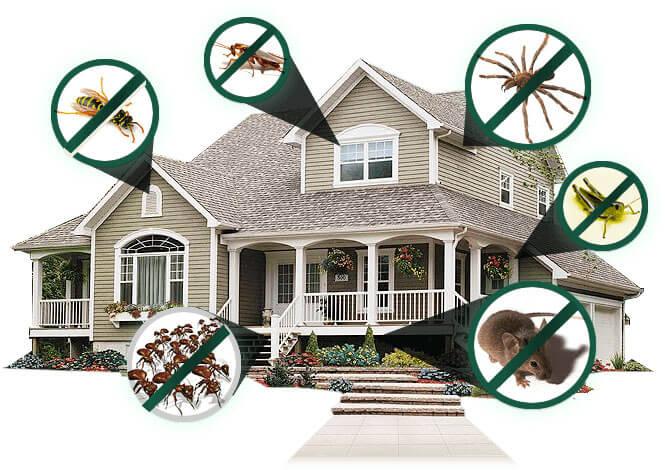Bed Pest Treatment Break Down: Contrasting Chemical Vs. Non-Chemical Solutions
In the realm of bug control, specifically when taking care of the relentless concern of bed pests, the choice between chemical and non-chemical treatment remedies can be an essential one. Both strategies offer distinct benefits and disadvantages, affecting variables such as effectiveness, safety factors to consider, and overall cost. By taking a look at the nuanced information of each approach, a clearer understanding of which course to seek in attending to a bed bug infestation can be achieved.
Effectiveness of Chemical Treatments
Chemical treatments for bed insect invasions have actually been commonly recognized for their quick and powerful effectiveness in getting rid of these insects. When taking into consideration the performance of chemical therapies, it is vital to understand that they can offer a detailed and quick option to a bed insect problem. Professional pest control men frequently depend on pesticides to target bed pests at different phases of their life process, consisting of nymphs, grownups, and eggs. These chemicals commonly function by interfering with the bed insects' nerve system, leading to paralysis and ultimate death.
Additionally, chemical treatments have the advantage of using recurring results, meaning that they can remain to remove bed pests also after the first application. This residual activity is especially useful in combating any prospective re-infestations. Furthermore, the rapid activity of chemical treatments can bring alleviation to individuals dealing with serious bed bug infestations, permitting them to regain control of their living spaces quickly.
Security Worry About Chemical Solutions
One essential element that needs careful factor to consider when making use of chemical services for bed pest therapy is making certain the security of residents and the environment. Direct exposure to particular chemicals used in bed pest treatments can lead to breathing issues, skin inflammation, or other damaging reactions, specifically in individuals with pre-existing problems or sensitivities.
Furthermore, the ecological influence of chemical solutions is another considerable consideration. Some chemicals made use of in bed bug therapies might be dangerous to valuable insects, wild animals, and ecological communities if they leach into the dirt or water supply. It is necessary to use chemical therapies judiciously, complying with safety standards, and taking into consideration much less harmful alternatives to alleviate these dangers and ensure the reliable and secure management of bed pest infestations.
Benefits of Non-Chemical Approaches
Taking into consideration the prospective safety and security worries and environmental influence linked with chemical solutions for bed bug therapy, exploring non-chemical approaches presents an encouraging alternative with several distinctive benefits. Non-chemical therapies are ecologically friendly, as they do not contribute to air or water air pollution, making them a sustainable selection for bug control.
Additionally, non-chemical solutions can be efficient in targeting bed insects, consisting of hard-to-reach locations where chemical treatments might not pass through - A1 pest control charlotte nc bed bugs. Techniques such as warm therapy, vacuuming, heavy steam cleaning, and mattress coverings supply thorough elimination without the use of hazardous chemicals.
Limitations of Non-Chemical Treatments

In addition, non-chemical therapies often call for multiple applications to achieve effective obliteration. This can be time-consuming and may not constantly assure full elimination of all bed pests and their eggs, specifically in concealed or hard-to-reach areas.
Additionally, the success of non-chemical therapies heavily relies on appropriate application and thoroughness, which can be testing for individuals without expert competence. Insufficient application of non-chemical techniques may lead to insufficient obliteration, bring about persistent problems and the need for do pest control extra treatments.
For that reason, while non-chemical therapies have their advantages, it is essential to recognize these limitations and consider them when identifying one of the most efficient strategy for handling bed insect invasions.
Price Contrast: Chemical Vs. Non-Chemical Options
Provided the constraints connected with non-chemical treatments, a necessary aspect to assess in the context of bed bug administration is the price comparison in between chemical and non-chemical alternatives. Chemical treatments generally involve the application of insecticides by professionals, which can range from $250 to $900 per area, relying on the severity of the invasion and the size of the area to be dealt with. On the other hand, non-chemical treatments like warm treatment or steam can be extra costly, with costs varying from $1,000 to $6,000 for a whole home. While the preliminary cost of chemical therapies may seem reduced, several therapies might be required to totally eradicate the problem, possibly increasing the total cost. On the other hand, non-chemical choices may provide a much more lasting and environment-friendly solution, although they can be cost-prohibitive for some people. Ultimately, when taking into consideration the expense of bed bug treatment options, it is very important to evaluate the in advance expenses against the performance and long-term sustainability of the selected technique.
Final Thought

Considering the prospective safety and security concerns and environmental effect connected with chemical solutions for bed insect therapy, discovering non-chemical methods provides an encouraging option with numerous distinctive advantages.Given the limitations linked with non-chemical treatments, a necessary facet to assess in the context of bed insect administration is the price comparison between chemical and non-chemical options. In contrast, non-chemical treatments like heat treatment or vapor can be extra pricey, with prices varying from $1,000 to $6,000 for an entire home. While the preliminary expense of chemical therapies may appear lower, multiple treatments may be needed to fully remove the invasion, possibly raising the total price.In final thought, when comparing chemical and non-chemical bed bug therapy choices, it is vital to consider efficiency, security, advantages, restrictions, and cost.